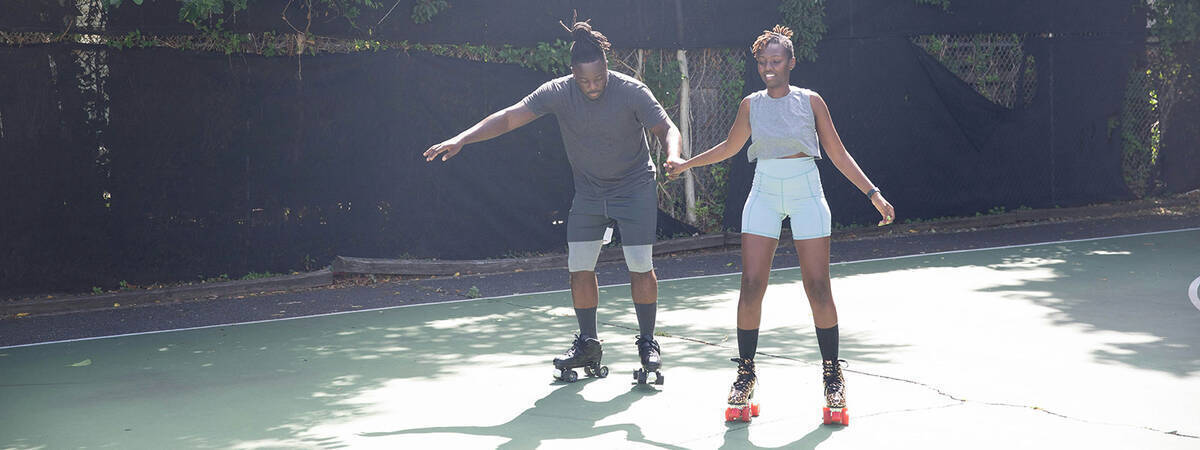Learning to Roller Skate for Beginners (Key Techniques)

For those new to quad skates, building confidence starts with understanding how to brake, manage your speed, and effectively utilise toe stops. This article covers key techniques including the T-stop, Duckfeet, and the Plough. It also discusses practical applications of toe stops, such as ascending stairs and handling kerbs.
Whether you are just starting with your first pair of quad skates or aiming to enhance your elementary skating skills, this guide provides valuable tips for novice skaters.
Executing T-Stops on Roller Skates
The T-stop is the prevailing braking method on roller skates. To execute a T-stop, position one skate at a right angle behind the other, dragging lightly on the surface to decelerate or halt safely.
We suggest novices begin on a smooth, level area to prevent tripping or wheel snagging. It is highly advisable to wear protective gear such as knee pads, wrist guards, and a helmet, due to the tendency for beginners to overbalance. Start slowly; speed is unnecessary at the beginning, and focusing on equilibrium and correct form is crucial.
You can learn how to execute T-stops on quad skates in this video:
The T-stop is a fundamental skill every quad skater ought to master to remain in control, as it lays the groundwork for more sophisticated stops. This technique is the safest and most effective means for managing speed and averting mishaps.
Skating Downhill with Control on Roller Skates
Descending on roller skates is thrilling, yet safety is paramount. Managing your speed is vital. Here are some pointers for a smooth experience:
- Begin on mild inclines to gain confidence, maintaining a proper stance by bending your knees, centring your weight, and leaning slightly backwards.
- Utilise the T-stop to gradually halt.
- Employ the "Plough" technique or "Duckfeet" for speed regulation (demonstrated in the video).
- Control speed by weaving side to side or by using the edges of your wheels to decrease momentum.
- Always don protective gear, including a helmet, wrist guards, knee pads, and elbow pads.
Following these guidelines will enable you to enjoy downhill skating while effectively managing your speed.
Using Toe Stops on Roller Skates
Toe stops are rubber or polyurethane blocks positioned at the front of most roller skates. They assist skaters in slowing down, stopping, and manoeuvring with greater ease.
To utilise them efficiently, bend your knees and lean slightly backwards for stability. Carefully drag the toe stop to lessen speed, and press firmly into the ground while leaning forward slightly to come to a complete stop.
Toe stops can also serve as a pivot for sharp turns. We recommend beginners practise on flat terrain to become accustomed to balance and pressure. Toe stops are a straightforward yet crucial tool for improved control and confidence whilst skating.
